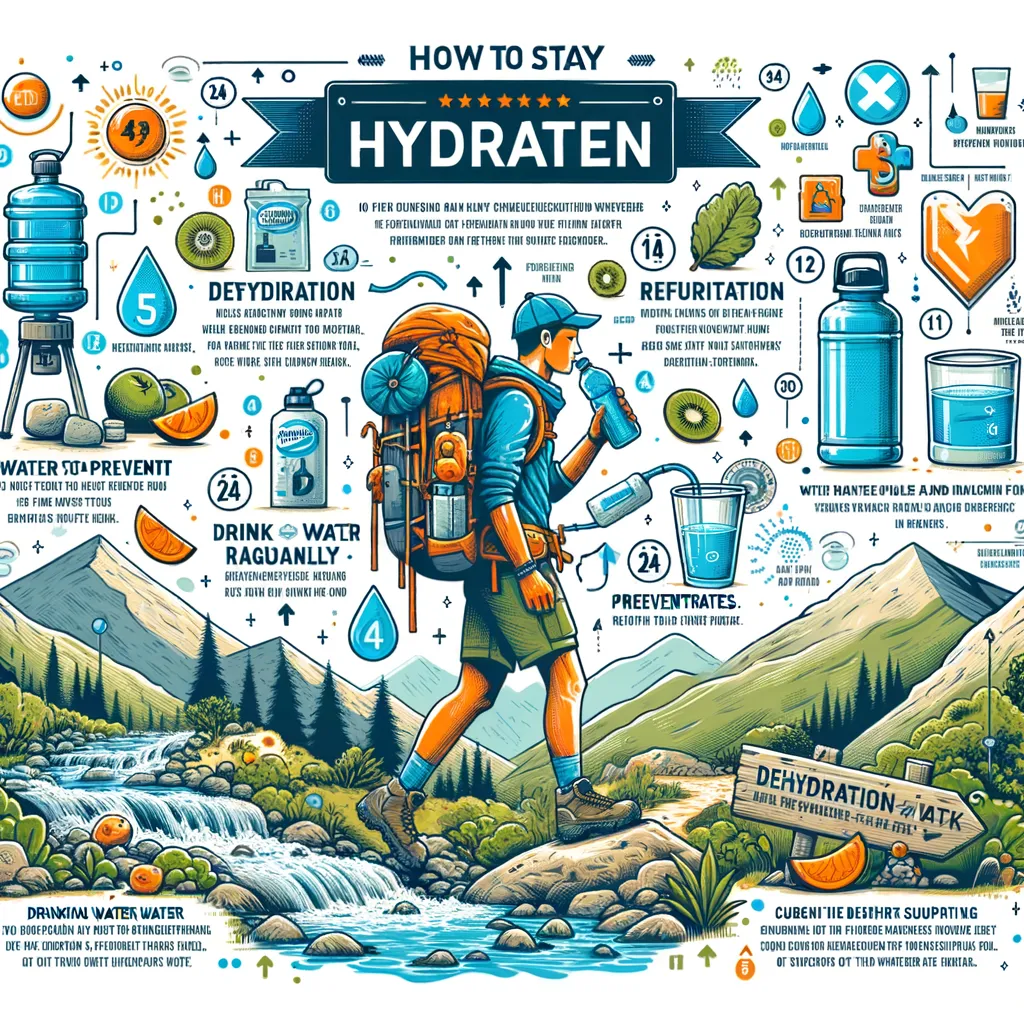Top Tips for Keeping the Family Hydrated on Hiking Adventures
Welcome to our ultimate guide for ensuring your family stays hydrated and happy on any hiking journey! As parents, we know the great outdoors offers an invaluable experience for our little ones. From the awe-inspiring view at the peak to the fascinating flora and fauna along the path, every hike is a blend of adventure and learning. But, amidst the excitement, it’s vital we keep hydration at the forefront of our planning. Let’s dive into some tried-and-true tips to keep your family’s hydration levels topped up on the trail!
Understanding the Importance of Hydration
Before setting out on your adventure, it’s essential to understand why staying hydrated is paramount, especially for children. Hydration affects not just physical performance but also cognitive function, which means keeping hydrated helps maintain our energy levels and focus — crucial for navigating and enjoying the trails safely. Dehydration, on the other hand, can lead to fatigue, decreased coordination, and even heat-related illnesses, which are particularly dangerous in remote outdoor settings.
How Much Water Do We Need?
A common question many parents have is, How much water should my family drink while hiking? While needs can vary widely based on age, weight, weather conditions, and the trail’s difficulty, a good rule of thumb is to aim for about half a liter (about 17 ounces) per hour for adults and slightly less for children. However, this can increase in hot conditions or during strenuous hikes.
1. Start Hydrated
Begin each hike well-hydrated. Encourage everyone in the family to drink water before even leaving home. Starting off well-hydrated can make a big difference in comfort and endurance on the trail.
2. Make Drinking Water Fun
For kids, consider colorful, durable water bottles that they can call their own. Stickers or markers can be used to personalize these bottles, making the kids more excited to take hydration breaks. There are even apps and games that encourage water consumption, turning hydration into a fun activity!
3. Frequent Water Breaks
Don’t wait until you’re thirsty to take your next drink; thirst is a sign you’re already dehydrating. Encourage frequent, small sips of water, especially in hot and humid conditions. Regular water breaks are an excellent opportunity for short rests, allowing everyone to catch their breath and enjoy their surroundings.
4. Use Hydration Packs or Belts for Easy Access
For longer hikes, hydration packs or belts can be a game-changer. They allow for easy, hands-free access to water, encouraging more frequent sipping. Plus, they distribute weight evenly, making it easier for kids and adults alike to carry their water supply.
5. Flavor the Water
Sometimes, plain water can become a bit monotonous, especially for kids. Adding a splash of natural flavor can make hydration more appealing. Consider infusing your water with fruits like berries, lemon, or cucumber for a refreshing twist that will entice the whole family to drink more.
Staying hydrated on the trail is essential for a safe and enjoyable hiking experience. By preparing ahead, making hydration fun, and taking regular water breaks, you can ensure that your family remains energized and hydrated, no matter where your adventures take you. Stay tuned for more in-depth strategies and ideas on how to stay hydrated while exploring the great outdoors!

Essential Hydration Tips for Family Hiking Adventures
Embarking on a hiking adventure with your family promises not only exploration and excitement but also an opportunity for teaching important habits, like staying hydrated. Proper hydration is crucial for everyone’s health and safety, especially in outdoor environments. This guide offers comprehensive insights and practical advice to ensure your family remains hydrated and joyful throughout your trek. Let’s jump into five critical aspects parents should prepare for when aiming to maintain hydration on the trail.
Recognizing the Signs of Dehydration
Understanding the early signs of dehydration can make a significant difference in preventing it. Symptoms such as dry mouth, fatigue, dizziness, and fewer trips to the bathroom are red flags. Children and adults might experience these symptoms differently, so it’s vital to keep a close eye on each other and address any signs of dehydration immediately.
Strategically Planning Your Hydration Approach
Planning is key when preparing for a hike. Knowing the length and difficulty of the trail, weather conditions, and estimated duration can help determine how much water to bring. It’s also helpful to identify any natural water sources along the way and pack water purification methods, such as tablets or a filter, as backups. Planning helps avoid carrying excessive weight while ensuring you have enough water to stay hydrated.
Engaging Children in Hydration Practices
Encouraging kids to stay hydrated doesn’t have to be a chore. Involve them in the preparation process by letting them choose their water bottles and involve them in flavoring the water. Educating them on the importance of drinking water and recognizing their body’s hydration cues empowers them to make healthier choices and develops their independence on the trail.
Choosing the Right Hydration Gear
The market is flooded with options tailored to hiking needs, including lightweight bottles, hydration packs, and collapsible water containers. Selecting the right gear depends on your family’s needs, the length of your hike, and personal preferences. Consider each family member’s ability to carry their water and choose options that spread the load evenly, minimizing fatigue.
Adjusting Hydration Needs to Weather Conditions
Weather plays a significant role in hydration needs. Hot, sunny days and high altitudes increase the body’s water requirements. Cold weather, on the other hand, might reduce the urge to drink water, but hydration remains equally important. Adjust your water intake accordingly and be prepared to increase your supply during warmer months or when hiking at higher elevations.
Ensuring the family stays hydrated during hikes is not just about carrying enough water. It’s about preparing, recognizing individual needs, and making hydration an enjoyable part of the journey. Tailoring your approach to your family’s needs and preferences, considering weather conditions, and learning to recognize the signs of dehydration are all steps towards a safe and memorable adventure. Keep these tips in mind, and you’re well on your way to a hydrated, happy hiking experience with your loved ones. Embrace these strategies for a fun-filled and safe outing that emphasizes the importance of staying hydrated in the great outdoors.
Camp until your heart contents. Camping Information
Disclaimer
The articles available via our website provide general information only and we strongly urge readers to exercise caution and conduct their own thorough research and fact-checking. The information presented should not be taken as absolute truth, and, to the maximum extent permitted by law, we will not be held liable for any inaccuracies or errors in the content. It is essential for individuals to independently verify and validate the information before making any decisions or taking any actions based on the articles.




